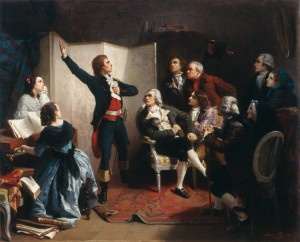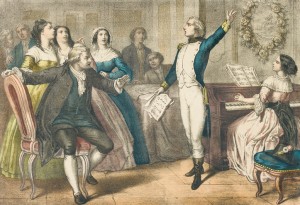February 1848: a New Revolution
The July Monarchy proved to be unsuccessful to respond to the needs of the lower classes whose working and living conditions had greatly worsened. From 22 February to 25 February 1848, uprisings broke out all over Paris. As a result, King Louis-Philippe abdicated in favour of his grand-son. On the same day, Alphonse de Lamartine, surrounded by Parisian Revolutionaries, proclaimed the Second Republic. Already on the lips of so many people, La Marseillaise became the rallying song for French republicans. On 10 December 1848, Louis Napoleon Bonaparte (1808-1873) was elected President of the French Republic.
At the Paris Salon of 1849, two paintings representing La Marseillaise were presented to the public. The first one, long lost since, was the work of Belgian painter Godefroid Egide Guffens (1823-1901), the second the work of Isidore Pils (1813-1875). Although, at the time, this second painting did not attract much attention in the press, it was amongst the 49 paintings that were acquired by the French Government in 1849. It was exhibited in one of the formal reception halls of the Ministry of Interior.
As early as 1878, the Director of National Museums of France requested that this painting be put on display in the Museum of Luxembourg. At the request of the Director of the National Museums in 1878, this painting was put on exhibit at the Museum of Luxembourg as early as 1879. It is also during this period that La Marseillaise re-became the national anthem of France. Within a few months, the painting became the most famous art work admired in the museum. Amongst copyists, women were not only painters for their sole pleasure but were also drawn into taking advantage marketing their artistic talents. With a few exceptions, although most of these artists remained relatively unknown and in need, they perfectly understood that La Marseillaise was definitely a market of opportunity. Between 1879 and 1914, Pils’ famous painting was copied over four hundred times. Between 1881 and 1908, the French government acquired fifty-eight copies which were distributed to prefectures, sub-prefectures and town-halls. No other painting has reached this phenomenal success ever since.




Ajouter un commentaire